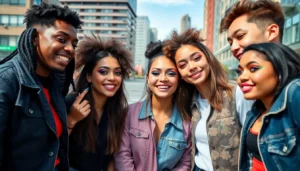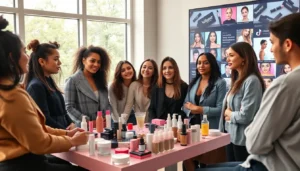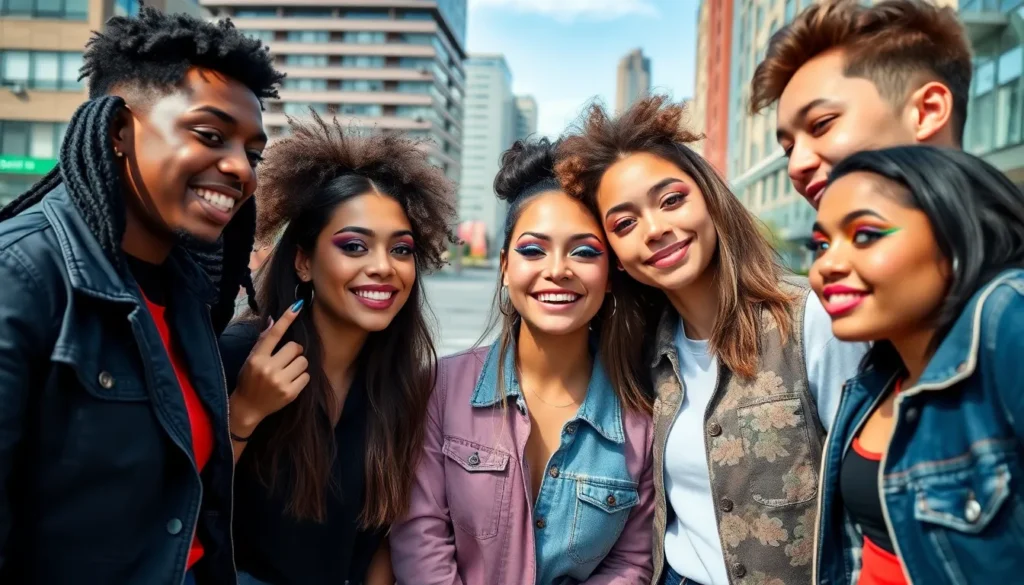Table of Contents
ToggleImagine a marketing campaign so engaging that it spreads like wildfire. That’s viral marketing for you. It’s the unicorn of the advertising world, rare, dazzling, and sometimes impossible to catch. In today’s digital landscape, harnessing the power of word-of-mouth can transform brands overnight. But what makes these campaigns so viral? Are these marketing geniuses just lucky, or is there a science behind the madness? Fasten your seatbelt as we explore viral marketing examples that captivated the globe and made brands memorable.
Understanding Viral Marketing

Viral marketing is all about creating content that people feel compelled to share. It’s like that one friend who always has the best stories: once they start talking, everyone listens. At its core, viral marketing relies on engaging storytelling, humor, and creativity that resonate with audiences. There’s no formula that guarantees virality. Instead, it’s about striking the right chord with emotions and ensuring the content is easily shareable across social platforms.
Key Characteristics of Viral Campaigns
Successful viral marketing campaigns share common traits:
- Emotional Trigger: Whether it’s laughter or inspiration, tapping into emotions is crucial. If content can make someone feel something, they’re likely to share it.
- Relatable Content: People enjoy sharing experiences they can relate to. Brands hit the jackpot when they create content that reflects everyday scenarios or common feelings.
- A Clear Call-to-Action: Encouraging viewers to share or participate can spark a wider reach. This can be as simple as asking viewers to tag friends.
- Innovative Presentation: Unique visuals or unexpected twists can grab attention fast. It’s all about setting the campaign apart from the mundane.
These elements combined can create a storm of shares.
Successful Viral Marketing Examples
There are several exemplary viral marketing campaigns that not only succeeded but also changed the landscape of advertising. Here are three standout cases that all marketers should study:
Case Study: The Ice Bucket Challenge
In 2014, the Ice Bucket Challenge took the internet by storm. The challenge encouraged participants to dump a bucket of ice water over themselves and share the video. The buzz was infectious, leading to millions of dollars in donations for ALS research. The campaign succeeded because it combined humor, a charitable cause, and strong peer pressure to participate. Everyone wanted to be part of the fun, and it turned into a global movement.
Case Study: Dove’s Real Beauty Campaign
Dove’s Real Beauty campaign shifted the conversation about beauty standards. The brand used real women, rather than models, to showcase their products. This relatable approach resonated with millions, leading to powerful discussions about body image. The campaign’s honesty and empowerment encouraged shares, making it a landmark moment in advertising.
Case Study: Old Spice’s The Man Your Man Could Smell Like
A campaign featuring Old Spice’s charismatic spokesman charmed audiences with humor and wit. It invited viewers to step out of their everyday routines and threw them into the absurd. The iconic commercials went viral not only because they were funny but also because they prompted spontaneous interactions on social media. Women took to their timelines to tag men they wanted to see in Old Spice, leading to an instant surge in sales.
Analyzing What Made These Campaigns Go Viral
So, what made these campaigns hit the mark? It boils down to a few critical factors:
- Timing: Each campaign tapped into cultural moments. The Ice Bucket Challenge coincided with rising awareness about ALS, while Dove’s campaign capitalized on growing conversations around body positivity.
- Simplicity: Both the Ice Bucket Challenge and Old Spice promoted clear, easy-to-understand concepts. Viewers knew exactly what to do, just take a bucket of ice water or purchase deodorant.
- Audience Engagement: Each campaign fostered a sense of community, encouraging not just sharing but participation. They weren’t merely ads: they were invitations to join in cultural conversations.
The Role of Social Media in Viral Marketing
Social media acts as the megaphone for viral marketing. Platforms like Facebook, Twitter, and Instagram allow ideas to spread rapidly. A tweet can reach thousands within seconds, and a Facebook post can become a global phenomenon overnight. Sharing, liking, and commenting amplify viral content, enhancing visibility.
Also, social media’s ability to help immediate discussions around trending topics means that moments can easily snowball. Businesses harness these platforms to not only promote but to engage. Encouraging user-generated content and interactions deepens connections with audiences, making marketing efforts all the more effective.
Creating Your Own Viral Marketing Strategy
To craft your own viral marketing campaign, consider these steps:
- Identify Your Audience: Understand who you want to reach. Tailor content to their interests and emotional triggers.
- Create Relatable, High-Quality Content: Invest time into crafting engaging stories or visuals. Memorable content is key.
- Leverage Social Media: Distribute your content through the appropriate channels. Make sharing easy. Promote campaigns across multiple platforms to maximize reach.
- Encourage Participation: Create campaigns that invite user interaction, even if it’s just a simple share or engagement.
- Analyze and Adapt: Monitor how your campaign performs. Use feedback to tweak your approach for similar future efforts. Experimentation is crucial.










